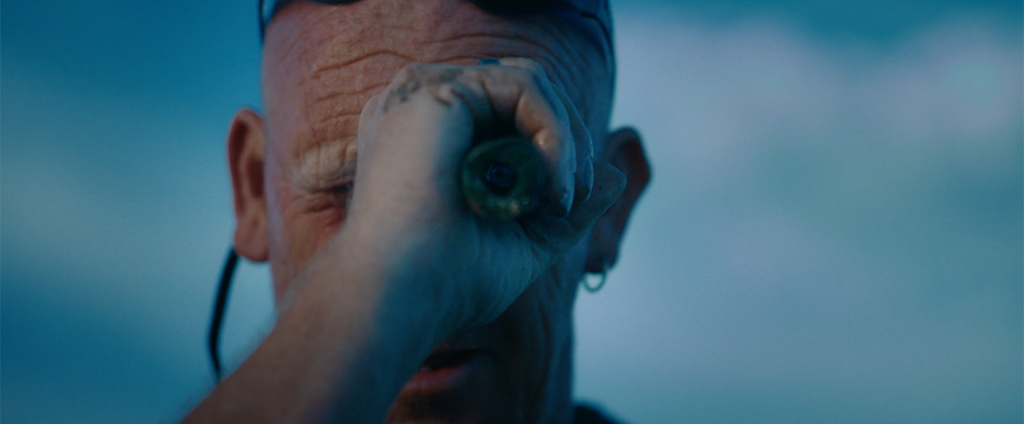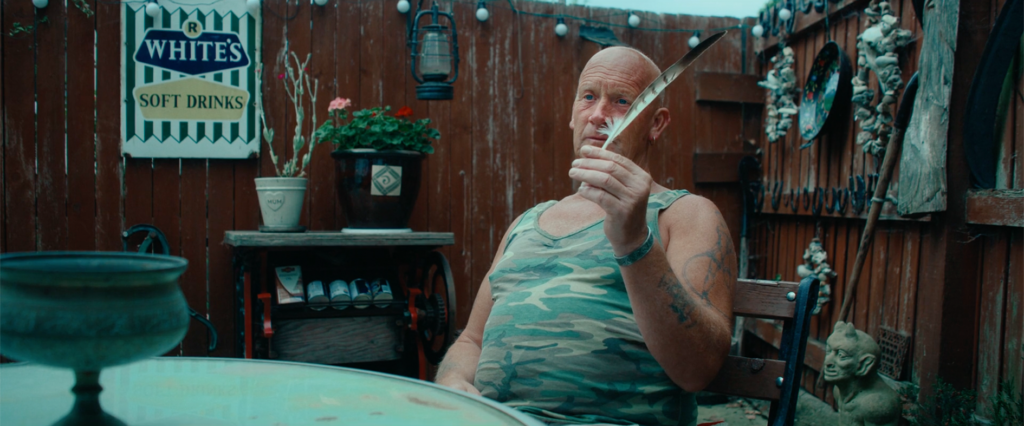Jack Bradley is a London based documentary filmmaker, telling the stories of people on the margins of society, through unconventional points of view. Jack has recently graduated from the National Film and Television School having studied Documentary Directing (MA). His film ‘A Tale of two Hoards’ screened in TREASURE at Fabrica (October 2024)
‘ A Tale of Two Hoards’ is about both the people and history? What or who drew you most into the detectorist’s world of ‘ownership’.
JB: I originally read about the issue of ‘nighthawking’ (illegal metal detecting) while reading a news article. The article discussed rogue metal detectorists plundering ancient monument sites under the cover of night in order to find historical treasure. The article warned that cases of nighthawking were on the rise since COVID lockdown, and that it posed a danger to British history.
This anxiety about nighthawking sparked intriguing questions – if an artefact was buried by a person nearly two thousand years ago who truly owns it? Who should have access to it? Should we fight to protect our historical heritage or should we live by the law of Finders Keepers?
Much of the ancient historical treasure in the UK sits buried in privately owned land and has therefore traditionally only been accessible to landowners and establishment historians and archaeologists. However in recent times metal detecting has grown in popularity as a hobby. This was accelerated by lockdown. In Britain only 5% of historical treasure is found by professional archaeologists, with over 90% now discovered by amateur metal detectorists. Although the majority of metal detectorists abide by the law (1996 Treasure Act), some choose not to. There is money to be made in selling to private collectors in America, or keeping it for yourself.
I became interested in the idea that the anxiety around illegal metal detecting might reveal something about land ownership in this country and the British class system.
John, the landowner and Shane, the detectorist are strong characters in your story. How did you find them and did they have ideas that impacted on decisions that shaped your film?
JB: I wanted to speak to two characters on either side of the debate, one landowner and one person who had been accused of nighthawking. I came across John while researching into significant British nighthawking thefts. John had a huge horde of ancient Roman bronzes, named the ‘Icklingham Bronzes’ stolen out of his land in Suffolk in 1981. These artefacts later ended up being sold on the black market and acquired by a collector in New York. John spent years campaigning to get the bronzes back and to this day is hyper-vigilant about the risk of nighthawking on his land. John felt a duty to preserve and protect British history that I very much admired and wanted to get across within the film.
I also wanted to speak to somebody who had been accused of nighthawking in the past. Shane Wood had recently been in national news concerning his discovery of the ‘Baddow Hoard’. Shane found a huge collection of Iron Age Golden Staters (coins) that had been forged over nearly two thousand years ago by the Trinovantes tribe. I went to meet Shane at home and he was kind enough to share his story with me. Shane is very keen to get his side of the story across and felt that he’d been unfairly portrayed in the wider media. Police and media outlets were quick to brand him as a nighthawk, but from his perspective he had made an incredible discovery and simply misunderstood the laws and conventions around reporting artefacts. I wanted to share Shane’s story as he’s deeply passionate about British history, and feels misunderstood by the wider archaeological and historical community.
The film has a captivating cinematic style. How did you approach the cinematography, and your collaboration with the colourist?
JB: Alongside Helena Gonzalez, who was the principal cinematographer on the film, we spent a significant amount of time researching in order to develop a visual language for the film. The location of East Anglia was key to our aesthetic and historical approach. We wanted to depict East Anglia as an epic landscape with an ancient history.
This was partly to satirise the epic historical genre, but also to give the impression that beneath the soil lies thousands of years of inhabitation. We were filming close to the famous ‘Sutton Hoo’ burial site, and the area has been home to roving Celtic Trinovantes hoards, early Roman settlers and Saxon societies.
We aimed to collide the past with the present through our visual style. We featured barren landscapes that would have looked similar in the Iron-Age, and through our depiction of newspaper cuttings, artefacts and gilded graphics we invited our audience to see Britain as a place steeped in history.
Our colourist Nathaniel Skeels grew up in the area and so was able to give our landscapes a real sense of authenticity. He was very much involved in our discussions from the outset we discovered our visual language.
Tell us a bit about how long A Tale of Two Hoards take to make from research to crewing to post production?
JB: We made A Tale of Two Hoards as our graduation film from the National Film and Television School. We began development in April 2022 and the film was finished by September of that year. We spent time doing thorough research for the film. From attending meetings of the Ipswich and Districts Metal Detecting Society and going on digs with them, to going on ride-alongs with the Suffolk Police Rural Crime Unit. I really wanted to understand the wider context of this story and realise why people were so impassioned about the protection of British history.
The soundtrack is evocative of Old England, yet so suggestive of the electronic sounds of the metal detector? Can you talk more about the instrumentation and musical direction you gave to the composer and sound designer.
JB: Our Sound Designer Simon Panayi and our Composer Harris Grant-Forster, were crucial in discovering the direction for the sound design and music. We had conversations about the sound design and music from the beginning of pre-production. It was important for us to blend a sense of the ancient and the present day.
Through the sound design we made omnidirectional microphone location recordings, to create a wide sense of space and scale in our location ambiences. We combined this with tactile recordings of digging earth and the clinking of coins; making the distant past feel immediate and real. The soundtrack was built out of two main instrumental components. The theremin was used to symbolise the present day and for its similarity to the sound of a metal detector. The use of ‘Jerusalem’ performed on the theremin at the end of the film, is a nod towards Britain’s colonial obsession with collecting world history and its own.
There is an irony in the fact that while the British state is reluctant to repatriate the stolen artefacts of other countries (e.g. the Parthenon Marbles), it is horrified at the thought of its own history being stolen.
To represent the ancient past we contacted John Kenny, a professor at the Guildhall School of Music and Drama and at the Royal Conservatoire of Scotland and multi-instrumentalist. He was part of an amazing project to recreate and play replica Carnyx horns. Carnyx horns are huge ceremonial horns that were found in Celtic burial sites throughout the UK. John was able to play a replica Trinovantian Carnyx horn ( the only one in existence). The original would have belonged to the same Celtic tribe that forged the ‘Baddow Hoard’ which was later discovered by Shane Wood.
What projects are you working on now?
JB: Alongside working in broadcast television, I’m developing an independent feature documentary, about rats in New York City.


